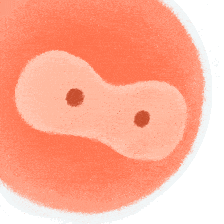In the UK, it is not common practice that hospitals send biopsy analysis reports directly to the patients or their families. This is probably to protect patients from undue anxiety or anguish after reading or worse, misunderstanding the technical text, so it makes sense for the clinicians to read and digest the information, then communicate back to the patients in layman terms and answer any questions. That’s why I had to ask for a copy of the report.
The information in the report is quite dense, far more detailed than what I was told over the phone that evening. The most important sentences in the report described the cell types found in the tumour:
the tumour was largely taken over by malignant cells, with some remnant benign cells originating from the salivary gland at one pole.
“There is a small cancerous part in your larger tumour” —— did the person miscommunicate over the phone, or did I not catch the information properly? I don’t know, and there’s no point crying over spilled milk. The important thing is to acknowledge that the reality is the exact opposite!
So, the ninja could have been largely malignant for some time.
Since the benign cells preserved the properties of the originating tissue, this allowed clinicians to say with a high degree of certainty that it’s a salivary gland cancer. It was also possible to estimate whether the tumour was fast growing simply by counting the proportion of dividing cells under the microscope. My tumour was classed as “low grade” because most of the cells were not in the middle of cell division at the time of sampling. The analysis also did not find evidence of the cells adopting characteristics that would allow them to invade nearby tissues or migrate to other parts of the body, so the probability of my cancer metastasising is low too.
I was incredibly lucky again. In the literature, most salivary gland cancers were considered “high grade” by the time they’re removed by surgery, with signs of invading nearby tissues. Survival rates, the chance of metastasis or recurrence all made quite dismal reading. We, in the nick of time, got the ninja out when it’s still disguised as a benign tumour. Thank goodness!
Which part of the report was open to interpretation? I would say it's the ending comment of the pathologist about the invasiveness of the tumour. He wrote that even though the malignant cells didn’t look invasive, but having them all the way up to the periphery of the tumour means it’s impossible to rule out some breaching of the encapsulating sheath could have begun ever so slightly, weakening the fragile sheath and allowing the cancer cells to reach the healthy tissues on the other side of the sheath. He cited the bursting of the tumour towards the end of the operation as being consistent with this concern. The pathologist thus suggested, to be on the safe side, the tumour should be considered “minimally invasive” and not content with just sitting inside the parapharyngeal space.
Wow! Does that mean the fine line of defence, the well-known line distinguishing a benign tumour from a malignant one —— the sheath —— was broken?
My scientific brain started working again: hang on, don’t panic. Umm...... how shall I interpret this information? How shall I assess my chance of recurrence and metastasis?
Right. The comment the pathologist made was some educated speculation based on his clinical experience and the broken-up tumour specimen that he was asked to analyse. Whether we should take his concern seriously or not should also depend on other evidence, such as the surgeons’ observations when they first opened up my neck and saw the tumour, so let’s not jump to conclusions so soon. An analogy here would be the forensic scientist examining the corpse of a murder victim to try to establish the cause of death. Often, forensics could comment on the kind of weapon used, for example, “a blunt object”, but to say whether that’s a piece of rock or a cricket bat will require eye-witness accounts or other pieces of evidence.
And finally, which part of the report was the most puzzling? Well, one of the samples sent for analysis came from my left submandibular salivary gland —— I had no idea it had been removed! That sample came back all clear, with no signs of cancer or anything malicious. Then why was it taken out? Could it be that the surgeons noticed some anomalies in it during the operation, and, erring on the side of caution, decided they might as well remove it since my neck was already opened up?
So many unanswered questions that I couldn’t shake off. “Where have you been, Mr J?” kept ringing in my mind. He’s met the ninja, he’s held it in his hands, he’s seen so many other patients’ tumours. I’m sure he has something enlightening to say about this?
I dropped his secretary an email, requesting a phone consultation to go through the details of the biopsy report. To fit into Mr J’s busy diary meant there was a three-week wait.
Meanwhile, one fact was loud and clear: I officially became a cancer patient.
